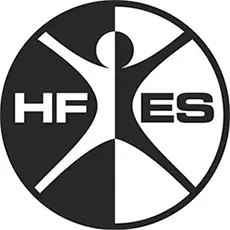HFES: Human Factors and Ergonomics Society

HFES, the Human Factors and Ergonomics Society, was founded in 1957 and develops standards detailing the ergonomic design of systems interacting with humans. The Human Factors Engineering of Computer Workstations standard is used by over 4,500 HFES members. HFES serves as the administrator for the United States Technical Advisory Group to ISO/TC 159 - Ergonomics and many of its subcommittees. Its headquarters are in Santa Monica, California, and it has 24 technical groups and numerous local and student chapters. Standards from HFES are available both individually, directly through the ANSI webstore, and as part of a Standards Subscription. If you or your organization are interested in easy, managed, online access to standards that can be shared, a Standards Subscription may be what you need - please contact us at: [email protected] or 1-212-642-4980 or Request Proposal Price.
Below are HFES's best-selling standards. To find additional standards, please use the search bar above.
ANSI/HFES 100-2007
Human Factors Engineering of Computer Workstations
This standard covers operator-machine interface issues associated with computer workstations used regularly in offices (i.e., intentionally built indoor office workplaces) for text-, data-, and simple graphics-processing tasks. This standard applies to computer workstations for a wide range of users; in general the physical dimensions and force requirements are designed to accommodate at least 90 percent of the North American population.
ANSI/HFES 200-2008
Human Factors Engineering of Software User Interfaces
The objective of HFES 200 is to provide design requirements and recommendations that will increase the accessibility, learnability, and ease of use of software. The ultimate beneficiaries are the end users of software, whose needs motivated the design recommendations in HFES 200. The application of this standard is intended to provide user interfaces that are more usable, accessible, and consistent and that enable greater productivity and satisfaction. Human Factors Engineering of Software User Interfaces consists of five parts: HFES 200.1: Introduction; HFES 200.2: Accessibility; HFES 200.3: Interaction Techniques; HFES 200.4: Interactive Voice Response; HFES 200.5: Visual Presentation and Use of Color.





